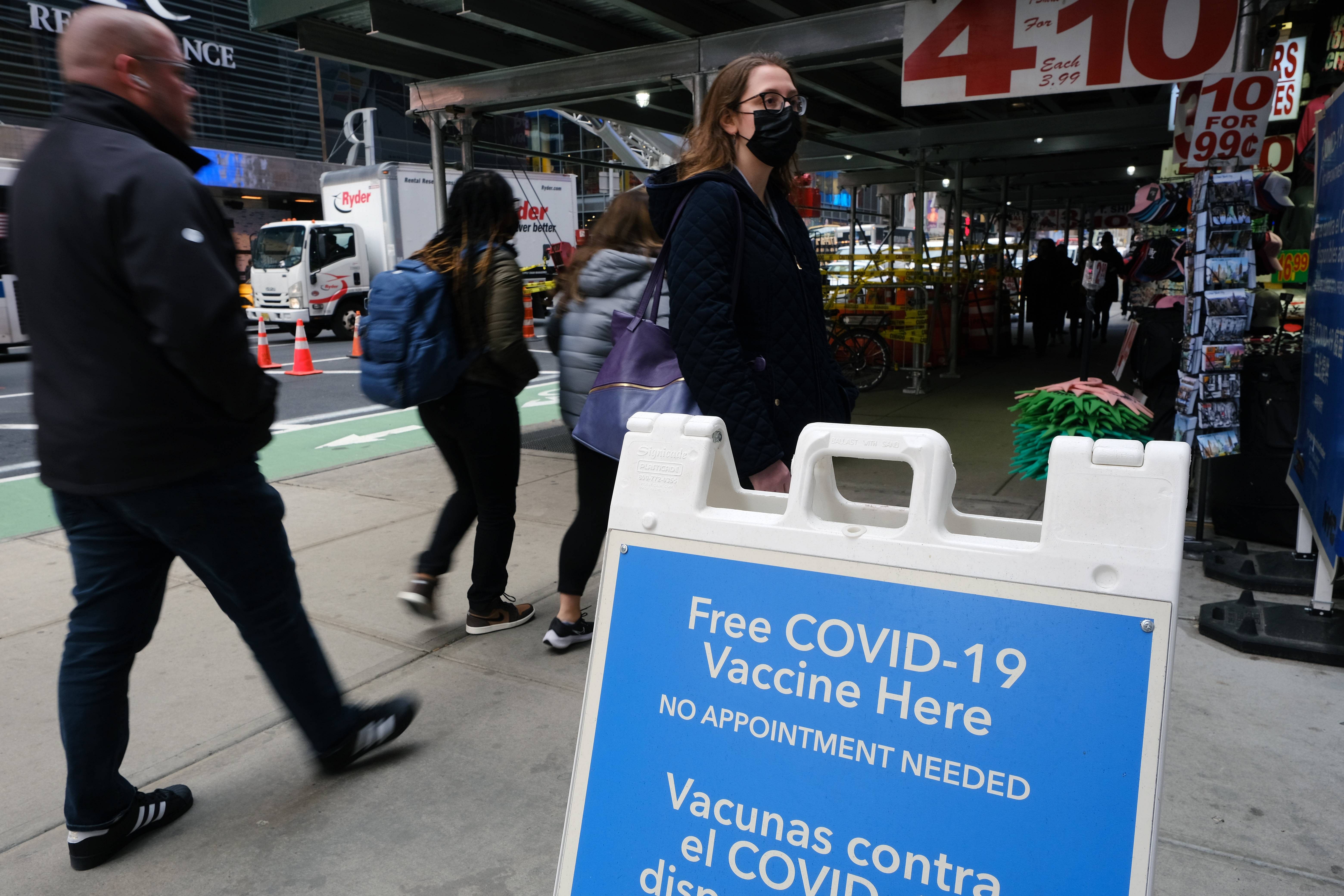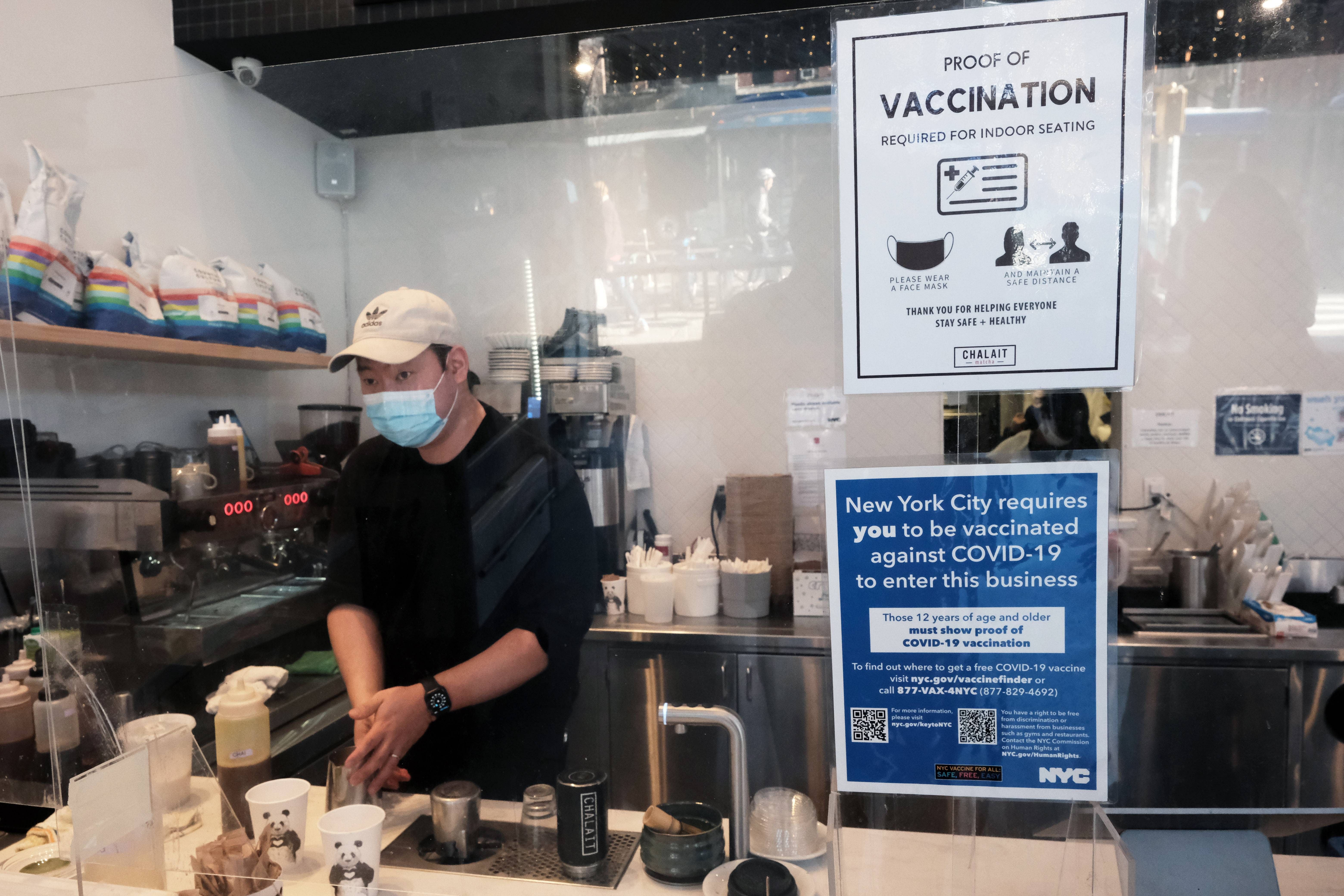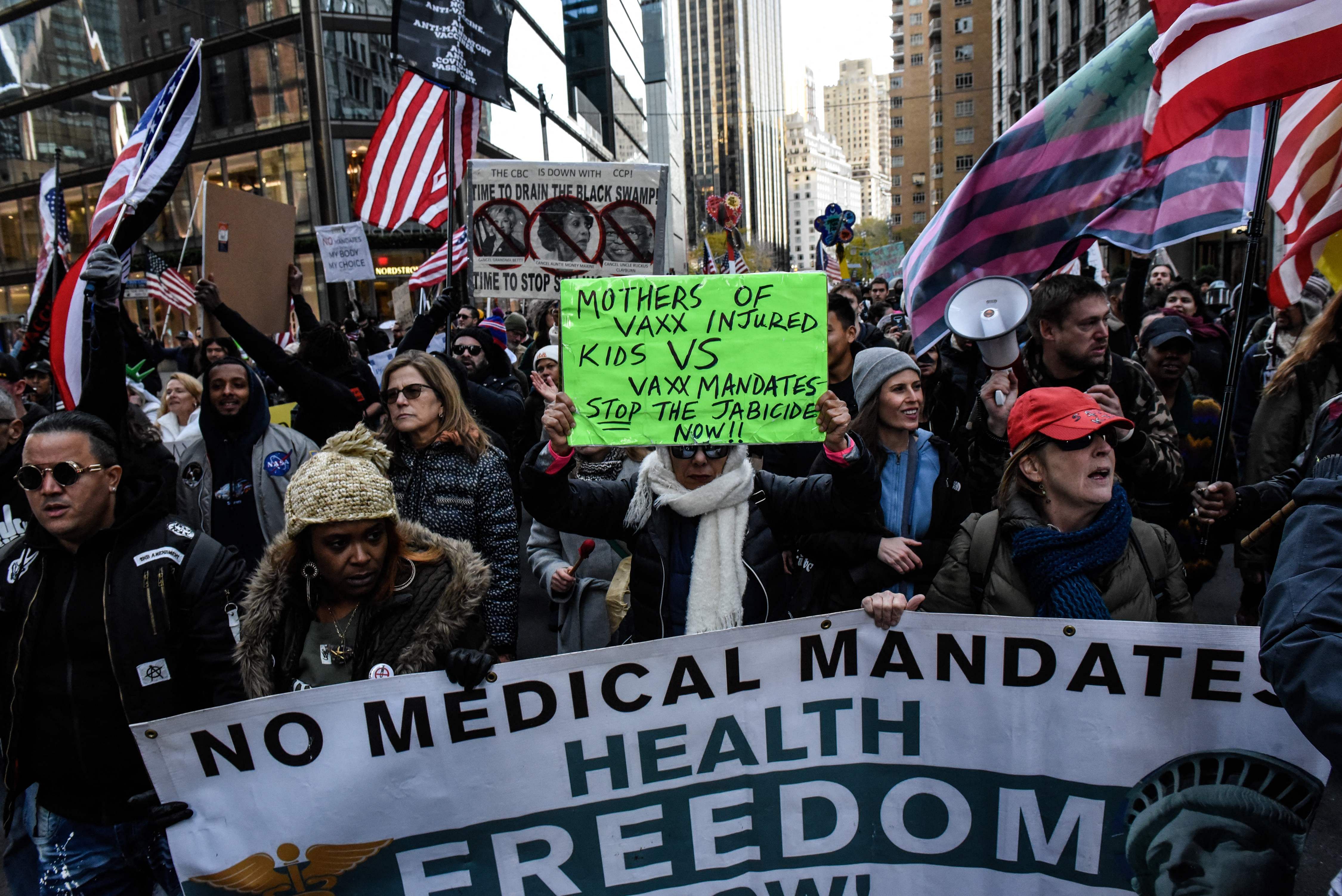NEW YORK (NYTIMES) - Government orders requiring coronavirus vaccinations have been expanding across the United States, but these have not provided the significant boost to state and local vaccination rates that some experts had hoped for, according to a New York Times analysis.
Meanwhile, at least 49,000 people have left their jobs or have been disciplined at work because they did not comply.
Mandates requiring shots cover at least 12 million people, according to a Times survey of every state and the nation's 100 largest cities. At least eight million people employed by state or city governments must get vaccinated.
In every state, even those that have banned some vaccine requirements, at least some people are mandated to be vaccinated because they are members of the military or federal employees, two groups totalling some 4.1 million people.
Millions more would be covered by federal requirements for health workers, employees of large private companies and federal-contracting employees.
Portions of those mandates have been stalled in court over the past several weeks.
A new requirement in New York City for on-site employees at all of the city's approximately 184,000 private businesses to get vaccinated by late December would cover hundreds of thousands of additional people. Many private companies across the country have also instituted their own vaccine rules.
To arrive at the total estimate of at least eight million people covered by state and city requirements, The New York Times identified vaccine requirements, beyond those mandated by the federal government, that apply to healthcare workers, long-term care workers, city or state public employees, correctional workers and education employees in the kindergarten through 12th-grade system.
At least 25 states and 39 cities have required shots for some portion of these employees, who otherwise would face ongoing testing requirements or, in some cases, disciplinary action or termination.
The estimate is an undercount because some states and cities did not respond to questions about their vaccination requirements. The Times also removed people from the state estimates who might have been counted multiple times under different mandates.
Many of the people covered by these requirements had already been vaccinated before the mandates were announced, but it is not clear how many.
In almost all of these states and in all of the counties surrounding the cities with mandates, a majority of the residents voted for President Joe Biden.
Statewide mandates tend to be most popular along the West Coast and in the North-east, whereas states banning some mandates tend to be clustered in the South.
Many of the deadlines for vaccination compliance are still in the future. Among those that have already passed, some are not actively being enforced yet.

Across many different ways of analysing the data, states and cities with vaccination mandates did not seem to see any significant increase in the rates of vaccinations after the mandates, possibly because many of those areas already had relatively high vaccination rates.
To try to measure the effect of vaccine requirements on vaccination rates, The Times analysed the shares of adults with at least one shot in 15 states, plus Washington, and in 15 counties surrounding big cities where compliance deadlines passed on or before Dec 1. The analysis excluded states and counties for which the Centres for Disease Control and Prevention lacked adequate historical data.
To determine the requirements' effects in a state or county, The Times found how many adults received at least one shot before the earliest mandate was announced, then measured the rate of growth in that number by the latest deadline for compliance with mandates.
That rate of growth was then compared with the overall change in vaccinated adults across the nation in the same time period.
The Times also measured growth in each location and across the nation from the date of the earliest mandate to Dec 1.
This alternative analysis was made on the presumption that people might not prioritise getting shots in places where the consequence for not getting vaccinated is regular testing, rather than discipline or job loss, or where the appeals process for a termination is lengthy.
Some places, like Mississippi, also announced mandates requiring vaccination or regular testing that went into effect almost immediately and, in those cases, The Times only measured the time period ending Dec 1.
In most locations, the number of adults with at least one shot grew at a slower pace after states and cities announced mandates than it did nationwide in the same time periods.
Of the 31 locations analysed by The Times, eight places outpaced the country by more than 1 percentage point in the period between the earliest mandate announcement and the latest date of compliance - Washington, Mississippi, Nevada, New York City, Fresno County in California, Miami-Dade County in Florida, Orleans Parish in Louisiana and St Louis in Missouri. New York state also outpaced the country when the analysis was extended to Dec 1.
Although state- and city-level mandates may have contributed to the rise in adults getting shots in those areas, other factors may also help explain some of the increases.
In the nation's capital, for example, the federal employee mandate may have played a role since those workers make up a significant portion of the population.
New York City, in addition to job-based mandates, has also restricted access to some businesses unless customers can provide proof of vaccination.

Mandates in Orleans Parish, St Louis and Miami were announced as coronavirus infections were surging in Louisiana, Missouri and Florida, and Mississippi's requirement for long-term care staff has coincided with a roughly 60 per cent surge in cases there.
The Times also compared the growth rate in vaccinations in the 31 states and counties to the growth in the directly previous comparable time period to see if any locations outpaced themselves by more than 1 percentage point after mandate announcements.
Only Mississippi outpaced itself in a significant way. Maine, Fresno County and Orleans Parish did, but by fewer than 2 percentage points.
Thirteen states with vaccination mandates, as well as Washington, already had surpassed the national adult vaccination rates when their mandates were announced, according to the analysis.
In those places, 78 per cent of adults on average had at least one shot when mandates were announced, higher than the national rates at the same time by 8.1 percentage points, on average.
Dr Lisa Cooper, director of the Johns Hopkins Centre for Health Equity, said she thought it was possible that mandates still might help raise vaccination rates as time wears on and more government agencies enforce the rules with disciplinary action or termination.
But she doubts that those consequences will be enough to sway people who are deeply against getting vaccinated.

"Mandates might help for people who are just finding it inconvenient but have no really legitimate reason to not get the vaccine," she said. "But then you have people who have strong beliefs against it or who really have significant other struggles, and the mandates are not going to do anything for those people."
Dr Cooper said that vaccine requirements for domestic travel or access to businesses or places where people can socialise might have more of an effect than job-based mandates.
"People feel like, 'I don't have to do that. I can just get another job,' " she said.
The Times survey also found that more than 49,000 people across the country have been disciplined or left jobs - either by quitting or being fired - because they did not comply with vaccine orders from state or city governments.
This is an underestimate because most states and cities did not answer questions about employees who had been punished or had quit. Some provided numbers of people who left their jobs but did not say whether the departures were related to mandates; The Times did not include those people in the analysis.











